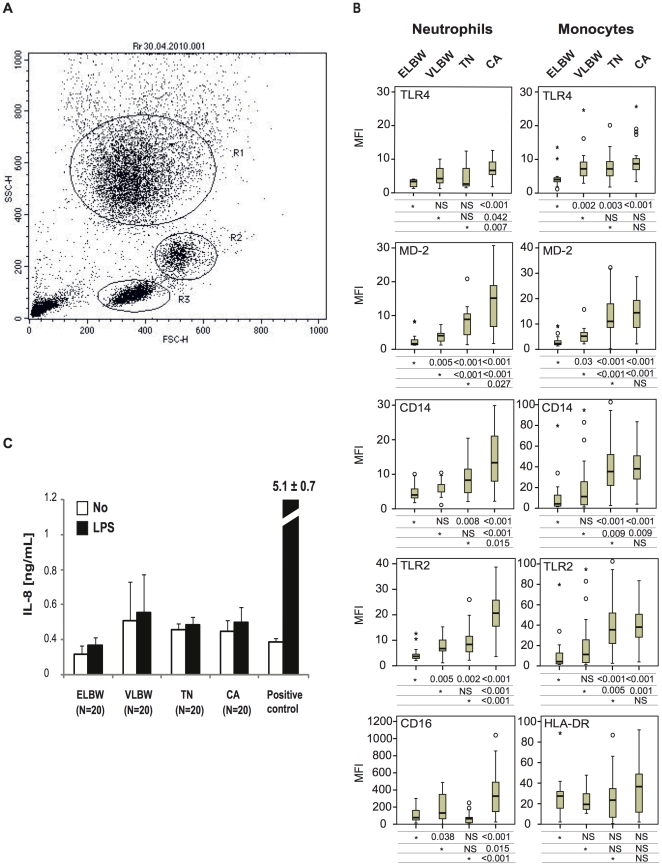Figure 1. TLR2, TLR4, CD14, and MD-2 surface expression of blood leukocytes and plasma soluble MD-2 activity from premature infants, term newborns, and control adults.
(A) Representative flow cytometry plot showing forward and side-scatter characteristics gating used to identify neutrophils (R1), and monocytes (R2). (B) Surface expression of TLR4, MD-2, CD14 and TLR2 of phagocytes (neutrophils and monocytes) from extremely low birth weight infants (ELBW, born before 28 wks of gestational age, N = 18), very low birth weight infants (VLBW, born between 28–32 wks of gestational age, N = 17), term newborn (TN, N = 25), and control adult (CA, N = 20). In addition the expression of the Fcγ receptor CD16 on neutrophils and the major histocompatibility HLA-DR on monocytes are shown. Receptor expression was measured by flow cytometry, and expressed as mean fluorescence index (MFI, geo mean receptor/geo mean IgG control). Errors bars are means ± SEM, On each line, a reference group (*) is compared to other groups and respective P value expressed using Mann-Whitney U test. (C) Plasma soluble MD-2 activity was measured as the capacity of plasma to support TLR4-HEK293 cell activation after a 30 ng/mL LPS challenge [50]. Human recombinant soluble MD-2 (1 µg/mL) was used as a positive control. (ELBW, extremely low birth weight premature infants born before 28 wks of gestational age N = 20; VLBW, very low birth weight premature infants born between 28–32 wks of gestational age, N = 20; TN, term newborns, N = 20; CA, control adults, N = 20). Errors bars are means ± SEM.

